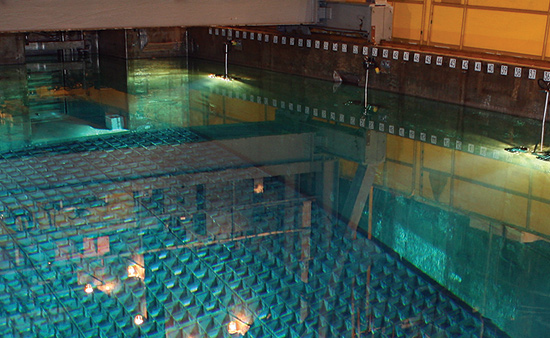Overview
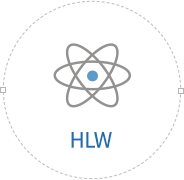
High-level radioactive waste is waste with high levels of heat and radioactivity.
The Nuclear Safety Act defines high-level radioactive waste as nuclides that emit alpha rays with a heat generation of 2 kilowatts per cubic meter and a half-life of 20 years or more, and a radioactivity concentration of 4,000 Bq/g per gram or more.In Korea, high-level radioactive waste is mostly spent nuclear fuel.
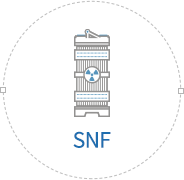
Spent nuclear fuel is nuclear materials after it has been used as fuel for nuclear power generation.
Nuclear power is generated by fissioning nuclear fuel in a reactor and using the heat generated to generate electricity.In the case of light water reactor type nuclear power plants, when nuclear fuel is used in the reactor for about three cycles (4-5 years), it no longer generates enough heat, so it is replaced with new nuclear fuel to continue generating electricity, and the burned nuclear fuel is withdrawn from the reactor.
This is called spent nuclear fuel. In the case of heavy water reactors, after about 10 months of nuclear fission in the reactor, the fuel is replaced with new fuel, and spent fuel is generated.
Nuclear Fuels cycle
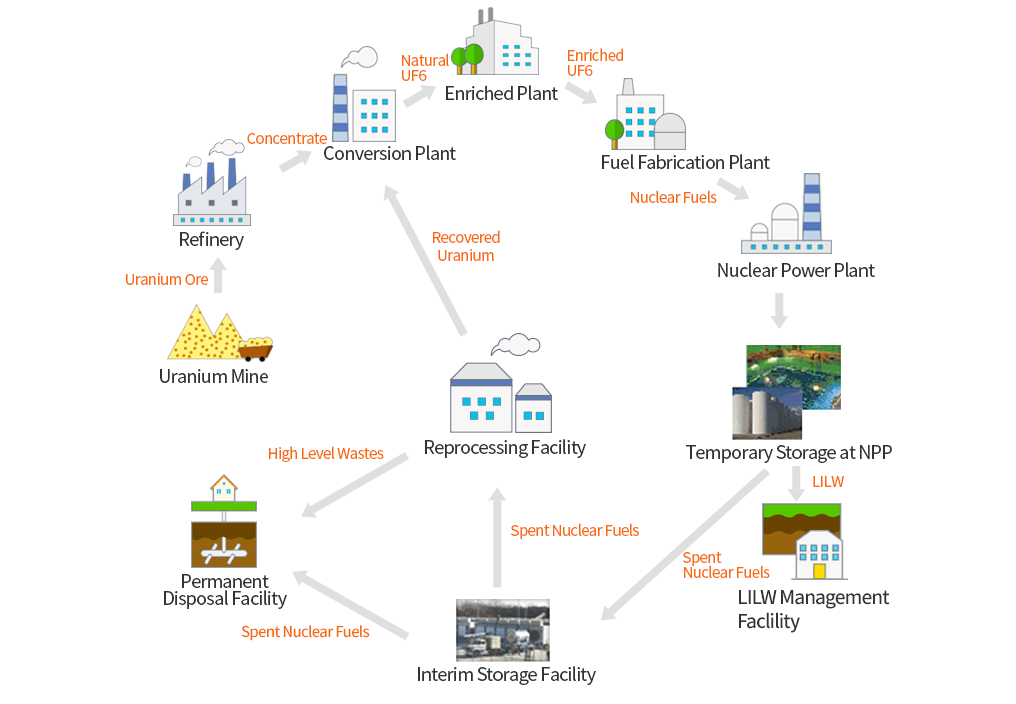
Unused Nuclear Fuels and Spent Nuclear Fuels
Spent Nuclear fuels have an identical appearance with unused ones, but they are a high level of radiation due to nuclear fission products created during nuclear fission in a nuclear reactor.
No direct contact is allowed for handling or storage since they continuously generate heat even after nuclear fission is finished, and they should be handled outside a barrier that blocks radiation
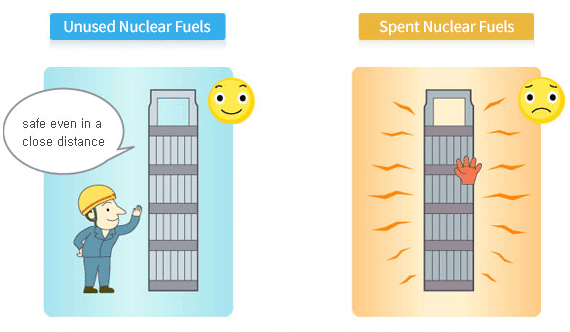

Storage
At present, spent nuclear fuels generated from operation of nuclear power plants are stored in a water tank in the plant. When the capacity of tank is exceeded, they may be stored in another tank or in a wet or dry interim nuclear fuel storage
